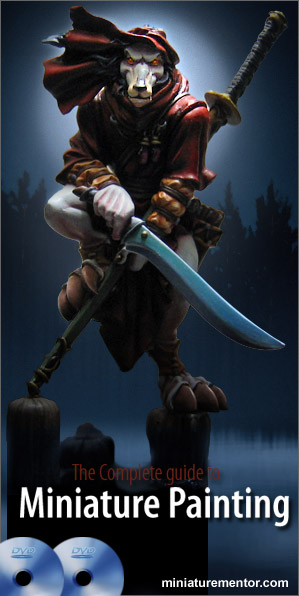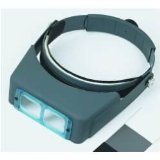Paint And Supplies
Items to get You Started
 |
Palette-Paint palette is inexpensive and very useful when you are using acrylics paint to blend colours. Get the ten well palette that comes in plastic at your art and craft store. |
|
Specialized Acrylic Paints - Acrylic paints is the latest medium to emerge in painting miniatures. Lately more and more modellers are choosing it over traditional mediums such as oil and enamel. They are usually packaged in small containers. Acrylics comes in varying series, one type used for fantasy miniatures and another type for military miniatures. For example acrylics from Citadel miniatures comes in bright hues are specially for fantasy subjects while Vallejo Model Color acrylics are more toned down and suitable for military miniatures. Specialized acrylics are recommended since it is much more accurate when you need the same colours to touch up your miniature figure. Oil paints-Oil paint is traditional medium that have been used a long time in miniature modelling. The positive aspects of using oil paint is that it Oil paint blends well and drys up slowly. Oils comes in tubes and are similar with the ones artist use for painting pictures. Acrylics for Craftwork-Acrylics used for general art and craft are inexpensive and comes in bigger bottles than specialized acrylics which is a good thing. It is possible to mix paints to get the colour that you want however the only setback is it takes time to master getting the right colours. If you have limited time to model, this type of paint is not for you. Mixing this type of acrylics and specialized acrylics is possible and can save you some money. |
| < |
Primer - comes in white, gray or black and it also comes in spray on or brush on. For miniature figure painting, it is widely recommended to get the white or grey primer. Using a primer |
|
Priming prepares the metal or plastic for painting and will make a big difference in how your model turns out. Apply primers between do 2-3 very light coats letting each coat dry before you apply the next. Make the coats very light so you don't puddle up any of the fine details of the miniature. Sealer - after you have finish painting and weathering your miniature figure, it is important to apply a spray on sealer or brush on type. Sealer protects your finished miniature model to last longer and prevents the paint from rubbing off when you accidently touch them. Use a matt sealer if you want a flat or dull finish to your miniature model. Glossy sealers are usually used for glass or wet effects. Rags or paper towel-prepare this to unload, cleaning your brushes or wiping off spills.
Some people swear by them and some prefer not to use them calling it a luxury item. Either way, if it makes you improve in your painting and it is within your budget, I say why not. Please check for more types of Magnifiers and Optivisor Work Area- Your work area should be a flat desk with at least 2 incandescent lights. I'd recommend you use at least two 60 watt incandescent bulbs for a light source. Ambient room lighting is also helpful however avoid painting miniatures under a fluorescent light. Flourescent bulbs cast a very blue light and fool your eyes. I �ve painted under such lighting conditions and the outcome was unsatisfactory. The best lighting condition is still daylight to me, but if you have paint at night, the abovementioned suggestions can help you. Styrofoam cups or jars- for water, mixing and clean-up. Inside these jars will be your thinner and water. Thinner is to clean your oil paints, while the water jar is to clean your brush for your acrylic paint. Newspaper-Also place some old newpapers to cover your desk, so that you don't mess up the desktop with paint and get in trouble with the Ministry of Home Affairs! |
Bonus Tip
Below is an external link to an article I wrote for another website.
Cheap vs Expensive Acrylic Paints





